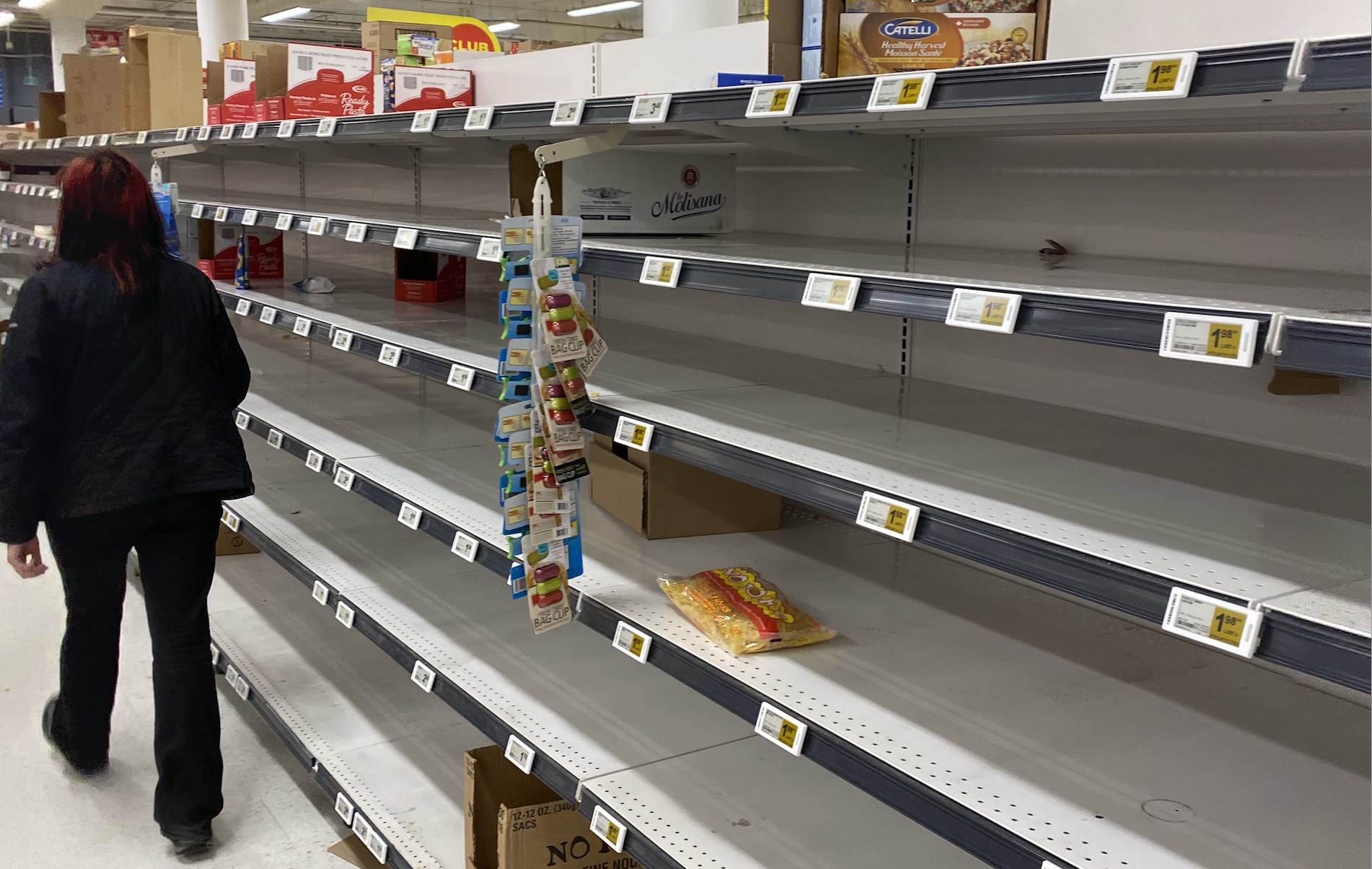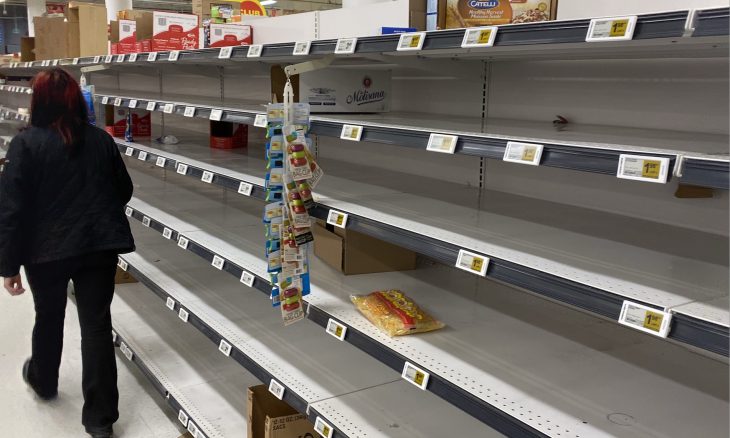When Items are Out of Stock

An October 3, 2022, article in Bloomberg News, reported that supply chain issues have hit stores like Walmart and Target hard. As large retailers deal with supply chain disruptions, inflation, and increased automation, they are requiring better delivery service from their vendors. During the pandemic, American retailers granted some leeway but, now that things have improved, they are becoming tougher with their standards and tightening their expectations on how goods are received.
Supply chain problems are global, according to J.P. Morgan Research. In May 2022, they reported that “supply chain problems were prominent during the COVID-19 lockdown amid a ‘perfect storm‘ of causes, including shifts in demand, labor shortages, and structural factors. The Russia-Ukraine conflict and COVID-19 lockdowns in China have recently exacerbated issues, affecting supply in certain sectors, including consumer goods, metals, food, chemicals, and commodities.”
They predicted that a slowdown in demand because of inflationary pressures on budgets could begin to moderate supply chain challenges, but forecast problems to continue through 2022, at minimum.
The University of Rochester News Center predicted, in June 2022, at least another year of supply chain troubles.
Just what is the supply chain? Basically, it is the beginning-to-end process of getting products or materials to their final destination. When the free flow of materials and products is blocked, it is called a supply chain disruption. The farther away a product is manufactured, the more susceptible it is to a supply chain disruption.
According to McKinsey & Co., global supply chains have been buckling under the strain of unprecedented demand and constructed effective logistics capacity. On average, global container shipping rates have more than quadrupled since 2019, and schedule delays have risen. In some areas, including North America, the cost spikes are even higher and delays more frequent.
A November 2021 paper from the Council on Foreign Relations (CFR), the Greenberg Center for Geoeconomic Studies, and Reviewing America offered suggestions for fixing global supply chains. They stated, “Truck-driver shortages, ‘lean’ inventories, and an overreliance on China plagued global supply chains long before the pandemic. Permanently addressing these and other issues will help the United States and the rest of the world better cope with the next shock.”
President Biden’s administration took some steps to address opening the Ports of Los Angeles to an around-the-clock operation, but they said this was only a temporary fix. There are issues that still need to be addressed. Labor shortages in the transportation and warehousing sector have been contributors to strains on the supply chains. Higher wages, better working conditions, and improved highway infrastructure would all help truck drivers. Ports, bridges, roads, highways, and parking for waiting trucks need improvement, and the new infrastructure legislation has allotted $17 billion for such upgrades.
CFR stated that the strategy of “just in time” manufacturing needs to be rethought, with greater inventory planning. Increasing geopolitical tensions between the U.S. and China also make the continued reliance on goods from China risky. But the United States must be realistic about its ability to restore manufacturing domestically, and the U.S. simply cannot compete in more labor-intensive manufacturing than lesser developed countries. Corporations also need a better risk-management strategy and an understanding of real supply chain vulnerabilities.
An article by CNN Business earlier this year reported that, despite expectations that the problems with the global supply chain would improve by now, “experts say they are getting worse.”
“We were looking at 2023 for things to get back to normal before the [Ukraine] crisis,” said Joe Terino, who leads management consultant Bain & Co.’s global supply chain practice. “Now it’s hard to say when it might end, because we don’t know how long it will go, how far-reaching it could become.”
The people of the Bible, largely in agrarian societies, knew about supply and demand. Their supply chains were simply from farmer to market and market to consumer. They also knew years of plenty and years when harvests were low. Ecclesiastes 5:11 says, “When goods increase, they increase who eat them, and what advantage has their owner but to see them with his eyes?” In Matthew 6:31-33, Jesus said, “Do not be anxious, saying, ‘What shall we eat?’ or ‘What shall we drink?’ or ‘What shall we wear?‘ For the Gentiles seek after all these things and your heavenly Father knows that you need them all. But seek first the kingdom of God and his righteousness and all these things will be added to you.”
How then should we pray?
- For the president and his administration as they work on solutions to supply chain disruptions.
- For Secretary Walsh to seek God’s wisdom as he heads the Labor Department.
- That Secretary Raimondo would be led by the Lord as she oversees the Department of Commerce.
- For discernment for Secretary Buttigieg as he leads the Transportation Department and the awarding of infrastructure funding.
- For U.S. officials as they evaluate and assess the reliance of the nation upon foreign manufacturing.
- For prudence and protection for current truck drivers and the ones being trained and licensed.
- That the officials at the ports and the railway freight infrastructure systems would be understanding in their dealings with workers and labor unions.
- For the managers and employees at retailers as they deal with shortages and the responses of their customers to items being out of stock.
- That the Lord would help you to seek His kingdom first so that your confidence in His ability to supply your needs increases.





